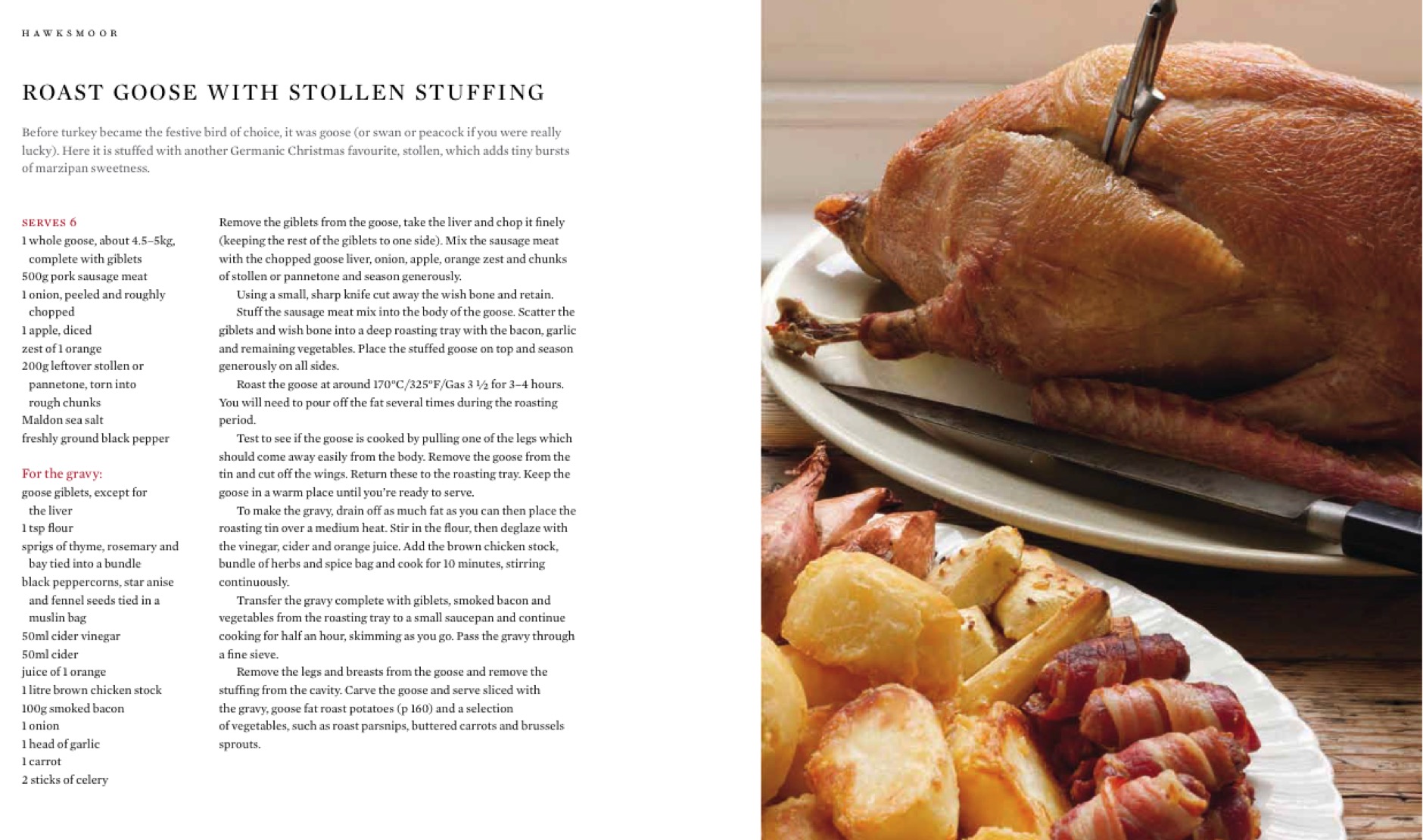Around this time every year, my Mum asks me two questions. First; can we go away this Christmas? Then shortly after; can we have goose this year? I’m a sucker for a proper at-home Christmas, so I’m always a bit anti on the first point, but this year – I’ve decided to cook goose for the very first time.
While the modern day American family will sit down to a meal of turkey, ham or beef this Christmas, goose is still the traditional Christmas meat of choice for many – and was long before Dickens raved about it being as much a ceremonial event as much as a meal in A Christmas Carol. (NB. opportunity to include a Muppets pic, which I am most definitely taking…)
Geese are pretty much perfect for a celebration meal in December. First up – they’re ready to be eaten twice a year; first in the early summer when they’re young, and again when they are at their fattest at the end of the year. So you get the plumpest birds for Christmastime. Also, goose fat has an incredibly low melting point (between 25°C and 37°C) making it easier to cook – and easier to eat. It was for this reason that goose was used as the centrepiece at Michaelmas, a feast day celebrated during the Middle Ages, which fell on the winter solstice and honoured the end of the harvest and the change in season. Because of this (and even older Greek traditions involving using goose as an offering to Thor around harvest time) it was only natural for goose to become the roast of choice for the Christmas, which eventually took the place of other winter solstice festivities.
We spoke to Hawksmoor legend Richard Turner about how to select, buy and cook this British classic perfectly. Scroll down for his Roast Goose with Stollen Stuffing recipe below; taken from Hawksmoor at Home.
Why pick goose over turkey?
Goose is traditional British Christmas fayre, whereas turkey is an import from our American friends. At Turner & George, we’re very aware of this, so try and recommend goose for our customers. It also helps that goose is a rich and succulent meat, and full of delicious fat, and fat is good.
How far in advance should you order?
For our online customers, as far in advance as you can, order slots fill up extremely fast as soon as they open, so the sooner the better. In store though, our customers have until about a week before Christmas. With all things considered though, we recommend sooner rather than later to avoid disappointment.
Where should you go?
To your local butcher, always. The UK is experiencing a real boom, recently, and there are some fantastic producers who will provide customers with naturally reared, slow grown meat. It’s a sure fire way of making sure that your Christmas bird or roast will be of a good quality. Look for birds that have been hung guts in after slaughter, as this intensifies the flavour much like when you dry-age beef. An animal with a longer life will make much tastier meat. Only buy from a supermarket as an absolute last resort.
Our geese are free range, produced on the Yorkshire Wolds. They are reared as naturally as possible and spend most of their life grazing 40 acres of grassland. Every evening they’re fed an ad lib diet of home produced cereals. The geese are a Danish Legarth strain, which produces a large but lean bird, and are purchased from a Norfolk breeder as day old goslings to remain on the farm until slaughter. All of the poultry is processed on the farm and is dry plucked and hand finished.
What’s a good price?
That depends on what you’re buying and from where. In London, a very good properly reared goose can push the £100 mark. Really, if you want the very best Christmas meat available, and of course you do, you should be looking from around £60-80 to feed between 6 and 8.
How much goose should you allow per person?Â
Here you need to remember that an ethically, properly reared bird with a longer life will be bigger, and while a 5 kilo bird could feed ten people – I’d suggest buying a large bird regardless of the size of your family. Luckily, goose is the ultimate meat for leftovers, it keeps for a good amount of time and can be used in myriad ways.
Which stuffing should you use?
It depends on personal taste, but I like a well seasoned pork meat based stuffing with a good fat ratio, using chunks of bread (sourdough works well) and quartered onions for instance.
Any watch outs? Stuff not to do – or things you’d do differently?
Professional chefs often advise cooking goose rare in the French manner, but I’m not French and a perfect goose for me is cooked long and slow. Well done with soft, almost confit flesh and crispy salty skin.
Roast Goose with Stollen Stuffing from Hawksmoor at Home (click image for a larger version)
T&G pic via Now Here This, Muppets via muppets.wikia.com, featured by neil whitehouse piper


